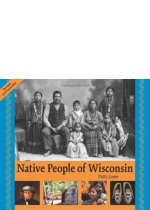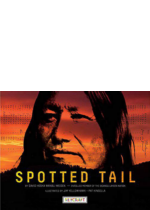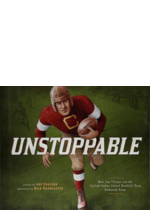For kids starting to think about their place in the world, here’s a unique look at point of view. Being small — or big — is not always what we think it is! We all know which things are big, and which are small, right? Buildings, streets, cities: big. Paper clips, daisies, teaspoons: small. But are they really? Or do things look different, depending on who’s doing the looking? Take an orangutan. To a human, it’s small, like a child. But to a flea, it’s gigantic! And imagine how scary a chicken looks to an ant! In this unconventional and original introduction to the idea of perspective, children learn the importance of recognizing that everyone has their own way of seeing things. And how, though bigness is in the eye of the beholder, all of us are just the right size!
Nonfiction
Nonfiction genre
Fourteen Monkeys: A Rain Forest Rhyme
In Manu National Park in Peru, an amazing fourteen different species of monkeys live together. That’s more than in any other rainforest in the world! How can they coexist so well? Find out in this lyrical, rhyming picture book that explores each monkey’s habits, diet, and home, illustrating how this delicate ecosystem and its creatures live together in harmony.
The Secret Life Of Trees- Explore the forests of the world, with Oakheart the Brave
This collection of delightful traditional stories and engaging facts will impart a love of nature, and inspire you to look after the world around you. Whimsical and detailed illustrations have pride of place in magical tales that mix natural history with a splash of fantasy, creating a book that you will pore over time and again.
111 Trees: How One Village Celebrates The Birth Of Every Girl
In a small village in India, a boy grows up to make a huge difference in his community by planting trees to celebrate the birth of every girl. Based on a true story, this book celebrates environmental sustainability, community activism and ecofeminism. This is the story of Sundar Paliwal, who is from a small Indian village ruled by ancient customs.
I Have The Right To Save My Planet.
All children have the right to learn about the world, to celebrate the water, air and sunshine, and to be curious about the animals and plants that live on our planet. All children also have the right to learn about endangered species, to be concerned about plastic in the ocean, and to understand what a changing climate means for our Earth. What can children do to help? Told from the perspective of a child, this colorful and vibrant book explores what it means to be a child who dreams of a beautiful future for their planet.
City Of Water
Living in cities where water flows effortlessly from our taps and fountains, it’s easy to take it for granted. City of Water, the second book in the ThinkCities series, shines a light on the water system that is vital for our health and well-being. The narrative traces the journey of water from the forests, mountains, lakes, rivers and wetlands that form the watershed, through pipes and treatment facilities, into our taps, fire hydrants and toilets, then out through storm and sewer systems toward wastewater treatment plants and back into the watershed.
Native People Of Wisconsin

“Native People of Wisconsin” tells the stories of the twelve Native Nations in Wisconsin, including the Native people’s incredible resilience despite rapid change and the impact of European arrivals on Native culture. Young readers will become familiar with the unique cultural traditions, tribal history, and life today for each nation.
The Water Walker

This is the story of a determined Ojibwe Nokomis (Grandmother) Josephine-ba Mandamin and her great love for Nibi (water). Nokomis walked to raise awareness of our need to protect Nibi for future generations, and for all life on the planet. She, along with other women, men, and youth, have walked around all the Great Lakes from the four salt waters, or oceans, to Lake Superior. The walks are full of challenges, and by her example Josephine-ba invites us all to take up our responsibility to protect our water, the giver of life, and to protect our planet for all generations.
Spotted Tail

This biography of Spotted Tail traces the life of the famous Lakota leader who expertly guided his people through a pivotal and tumultuous time in their nation’s history as they fought and then negotiated with the U.S. government. Spotted Tail is remembered for his unique leadership style and deep love for his people. Today, a university is named in his honor.
Unstoppable: How Jim Thorpe And The Carlisle Indian School Football Team Defeated Army

In the autumn of 1912, the football team from Carlisle Indian Industrial School took the field at the U.S. Military Academy, home to the bigger, stronger, and better-equipped West Points Cadets. Sportswriters billed the game as a sort of rematch, pitting against each other the descendants of U.S. soldiers and American Indians who fought on the battlefield only 20 years earlier. But for lightning-fast Jim Thorpe and the other Carlisle players, that day’s game was about skill, strategy, and determination. Known for unusual formations and innovative plays, the Carlisle squad was out to prove just one thing — that it was the best football team in all the land.
